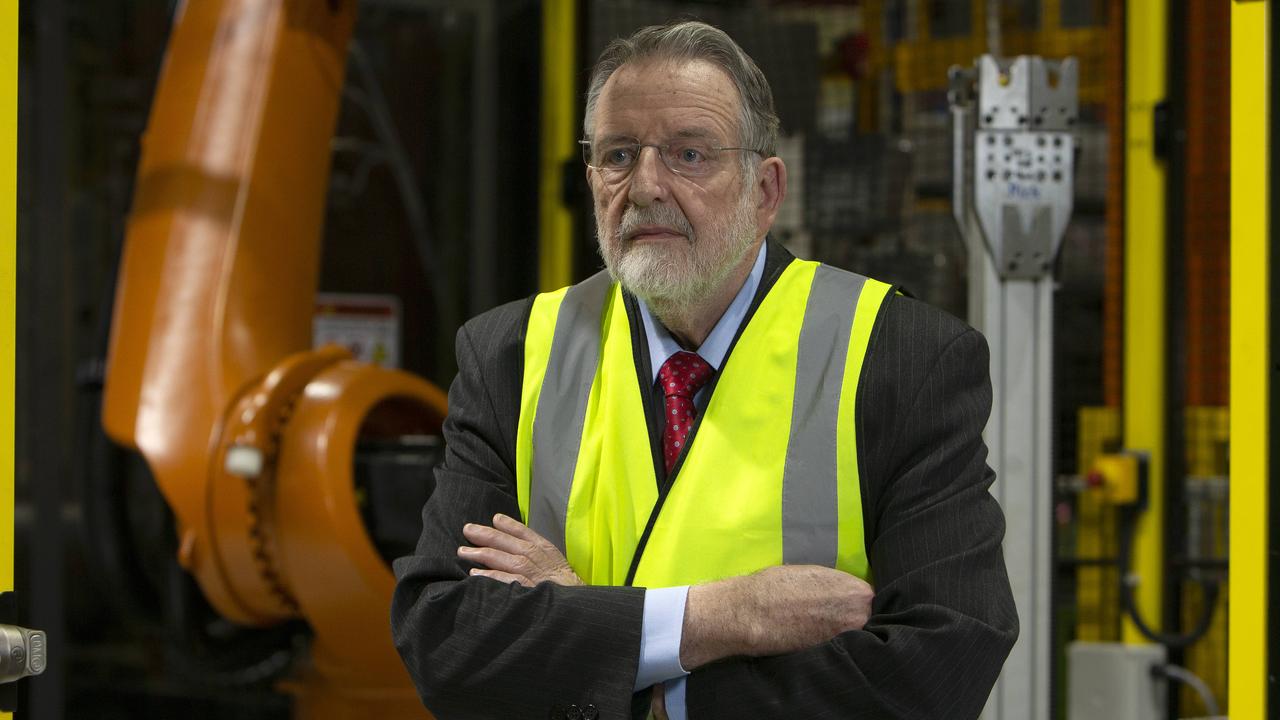Top SA companies unite to bargain for better deal on electricity prices — and hopefully for the public
A GROUP of the state’s biggest power users, fed up with out-of-control electricity price rises, has banded together to strike a deal they hope will have flow-on benefits for the public.
SA Business
Don't miss out on the headlines from SA Business. Followed categories will be added to My News.
- SA Power Networks blasted for not offering compensation
- Water storage solution for SA’s power crisis
- Dramatic overhaul of SA’s power grid promised
- Pelican Point owner says it cannot rescue SA from power crisis
- Can coal ever be clean?
A GROUP of the state’s biggest power users, fed up with out of control electricity price rises, has banded together to strike a deal which they hope will have flow on benefits for the general public.
The South Australian Chamber of Mines and Energy is leading a group of businesses including copper miner OZ Minerals, Whyalla steelworks owner Arrium, and major food producer Thomas Foods, in a bid to lock in power contracts for 11 years.
SACOME chief executive Rebecca Knol said the companies accounted for about 10 per cent of the state’s power demand.

But despite their already formidable buying power, the companies were facing electricity price increases of 30-80 per cent for new contracts.
The companies are banding together to bid for new contracts, and hope that in doing so they can attract new power generation into the SA market, reducing power prices for everyone.
“By aggregating their load, they will improve their individual bargaining position and be able to establish more cost-competitive supply contracts,” she said.
“And there will be flow on benefits. Retailers and generators tell us the amount of electricity this group requires, and the length of the contracts they are seeking, will increase competition by encouraging new or currently mothballed generation to enter the South Australian market.
“It is expected that the certainty of a firm load will enable electricity suppliers to better manage their fuel source portfolios and this is likely to have a flow-on effect to all consumers due to increased competition in the retail electricity market.”
The group has approached the Australian Competition and Consumer Commission (ACCC) for permission to negotiate as a group, which is generally not allowed under Australian competition law.
Ms Knol said the group expected the ACCC to make a draft determination in April.
There is a belief among some in the resources industry in South Australia that the state currently has sufficient gas-fired power to meet demand, but some of that capacity is not being operated because the power plant owners can’t run them profitably.
One example of this is the mothballed turbine two at the Pelican Point power station, which is owned by French company Engie.
That turbine has the capacity to provide 240 megawatts of power into the grid, but has been mothballed because it is not viable to run.
Engie revealed on Monday the unit will stay mothballed even if the company wins a State Government contract to supply about 100 megawatts of electricity.
Engie says it needs big, long-term contracts to justify resurrecting the second gas-fired unit.
Spokesman Jim Kouts said the extra power was only needed a few days a year so it was not “commercially viable” to start up the second unit.

The State Government is optimistic that a 10-year contract to supply 75 per cent of its power could change the economics and convince Engie it was worthwhile.
But Mr Kouts said the company needed long-term contracts much closer to the 240 MW capacity of the second unit to be profitable.
The plant could reach efficient levels at about 80 per cent of that capacity, he said.
Engie fronted a Senate committee into the resilience of the electricity system in Adelaide, after being criticised for not being quick enough to start the second unit to prevent load shedding earlier this month.
Mr Kouts said the company did not have a firm gas supply for the second unit, which meant it could not bid to provide power. A supply would be too expensive if the plant was “only running a few days per year”.
“There is not commercial rationale to operate the second 240 MW capacity Pelican Point unit in the current market environment in SA for a small number of high-demand days across the year,” he said.
At noon on Monday SA was producing 643MW of gas power, 70MW of wind power and 288MW of electricity from small scale solar.
Ms Knol said attracting a new provider, or existing mothballed energy back into the system was a viable solution while the larger electricity issue was sorted out over the longer term.
“SA business need short term solutions as energy markets transition to meet the needs of a lower carbon economy,” Ms Knol said.
The State Government has also been promising a “dramatic” intervention in the electricity market, to be announced soon.
State Energy Minister Tom Koutsantonis said the Department of State Development had been working with large industrial consumers to facilitate collective electricity supply contracts “so we are very supportive of what SACOME is trying to achieve.”
“By aggregating contracts, companies can substantially increase their purchasing power and get better deals from generators.
“The State Government is using the procurement of its electricity load to incentivise the entry of new electricity generation into the local market, which will increase the supply capacity.
“We are also working on a package of more dramatic market interventions that will lower prices and increase grid stability, and will be in a position to announce those policies soon.”
— with Tory Shepherd


